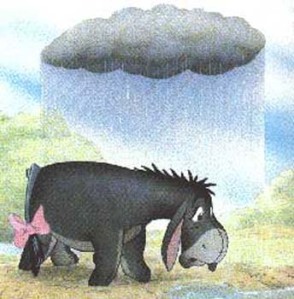Unlike Richard Feynman, Stillman Brown does not do his best thinking in strip joints (see below).
The July 28 issue of the New Yorker (still the finest magazine in the world, despite the ill-advised, un-satirical Obama cover) had an article about the scientific inquiry into insight that got me all hot n’ bothered. In “The Eureka Hunt,” Jonah Lehrer writes about kick-ass neuroscientists who are tracing the hidden pathways of ‘the insight experience,’ and finding that although we can’t feel it, our minds can subconsciously prep an “ah-ha!” moment when confronted with a difficult problem (The article isn’t available online, but you can find an illicit copy here.)
This sets the context nicely:
There is something inherently mysterious about moments of insight … like Archimedes shouting “Eureka” when he saw his bathwater rise, or Isaac Newton watching an apple fall from a tree and then formulating his theory of gravity. Such tales all share a few essential features, which psychologists and neuroscientists use to define “the insight experience.” The first of these is the impasse: before there can be a breakthrough, there has to be a mental block.
Then, the insight arrives, instantaneously, in a flash of connected threads…
This is another key feature of insight: the feeling of certainty that accompanies the idea.
So, a few very smart and hardworking researchers started running simple, phrase-based experiments to tease out exactly how the insight experience works. If you were looking reason #248 to sit your ass down and practice, I give you this, the money quote for meditators:
Kounios [a researcher] tells a story about an expert Zen meditator who took part in one of the C.R.A. insight experiments. At first, the meditator couldn’t solve any of the insight problems. “This Zen guy went through thirty or so of the verbal puzzles and just drew a blank,” Kounios said. “He was used to being very focussed, but you can’t solve these problems if you’re too focussed.” Then, just as he was about to give up, he started solving one puzzle after another, until, by the end of the experiment, he was getting the all right. It was an unprecedented streak. “Normally, people don’t get better as the task goes along,” Kounios said. “If anything, they get a little bored.” Kounios believes that the dramatic improvement of the Zen meditator came from his paradoxical ability to focus on not being focussed, so that he could pay attention to those remote associations in the right hemisphere. “He had the cognitive control to let go,” Kounios said, “He became an insight machine.”
Ok – mega-cool!
As a recovering hyper-rationalist, I simply adore it when science and my spiritual practice intersect, and this anecdote suggests that the razor-thin line between Too Focused and Daydreaming that meditators cultivate can lead to a heightened ability to tap insight. The insight experience itself cannot be learned, but dwelling in the conditions leading to it might be teachable.
In other words, insight seems to happen at the intersection of relaxed concentration and non-attention – closely related to, but not quite what scientists call “flow.”
I’ve written about the benefits of daydreaming-enabled living for this blog before, and another passage from Lehrer’s article speaks to the helpfulness of Just Not Forcing It:
Although we often complain that the brain is too easily distracted, Schooler believes that letting the mind wander is essential. “Just look at the history of science,” he said. “The big ideas seem to always come when people are sidetracked, when they’re doing something that has nothing to do with their research.”
And the utility of strip clubs:
RIchard Feynman, the Nobel Prize-winning physicist, preferred the relaxed atmosphere of a topless bar, where he would sip 7 UP, “watch the entertainment,” and, if inspiration struck, scribble equations on cocktail napkins.
Pole-dancers aside, the thing I find so exciting about this article is the same thing that I find so inspiring about a vivid dream: my subconscious mind is often more flexible, creative, and able to form unexpected connections than I am. It just might be that, paradoxically, the best way to solve a difficult problem is to simply ignore it and go sit in your bath or under an apple tree. Who knows, you might get lucky.

